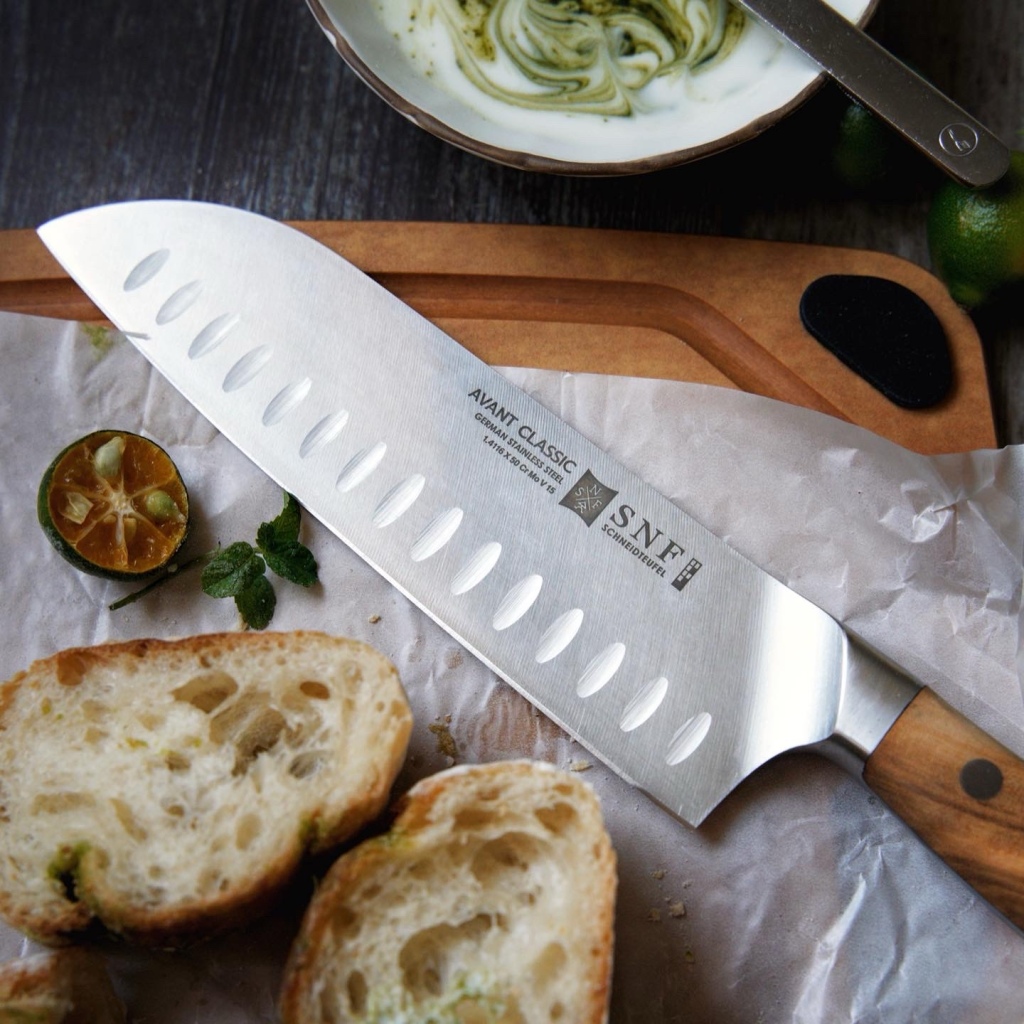The language itself provided inspiration – “Schneiden” directly translating to the verb “to cut”, while “Teufel” meaning Devil. Combined as Schneidteufel, the name evoked razor-sharp imagery befitting of the precise forged knives now being produced through modernized drop-hammers and belt grinders. It was a Devil that effortlessly sliced through anything – the very embodiment of high-performance German kitchen steel.
And the legacy of this Cutting Devil endures today in every SNF Schneidteufel Global product still hot-stamped with Rudolf’s Sphinx trademark before being packaged for shipment around the world. Over 150 years of generational passion now meets 21st century households.
Find out our origins.
The SNF Schneidteufel Global brand as we know it today sprouted from a small German knifemaking operation run by the Everts family in the early 1800s. Located in the cutlery epicenter of Solingen, Germany, the family crafted quality knives and trade tools for several decades.
When August Everts took over in 1872, he elevated the skill and reputation of Everts cutlery by adopting nascent grinding and drop-forging technology of the times. This allowed more precise blade tolerances unachievable only using hand-hammering. August also registered one of the first trademarks used on German knives – the Sphinx-Forged.
His son, Julius Everts, carried the company into the 1900s, witnessing two world wars which remarkably left the factory unscathed. Following WWII, as German knife exports revived across Europe, Julius focused on premium razor production leveraging the surgical steel advances born from the war.


By the 1980s Schneidteufel forged knives gained acclaim for their perfect balance, ergonomic handles, and incredible edge taking properties. Rudolf capitalized on this foothold by further expanding overseas distribution and being the first German brand to promote kitchen knives through Western television commercials.
The series of popular ads featured families gathering to effortlessly slice potatoes with the Forged Sphinx Pro-Cut knives. Rudolf had aligned with emerging hospitality design trends and Schneidteufel become synonymous with high-performance, durable German forged kitchenware.
Succession
When Julius passed the company reigns to his own son Rudolf in 1965, the family legacy brand underwent its first major evolution…
Got it, thanks for the additional details! Here’s a continuation:
…The Everts family legacy brand underwent its first major evolution when Rudolf took the helm in 1965. Having grown up immersed in Soligen’s storied knifemaking culture, Rudolf envisioned elevating his family’s operation focusing solely on forged kitchen cutlery rather than the hodgepodge of tools once produced.
Leaning into marketplace trends favoring German brands, Rudolf centered production around kitchen knives and shears, branding the line “Schneidteufel” – translated as Cutting Devil. Rudolf modernized the forging operation with drop hammers and belt grinders to boost output while maintaining artisanal quality.
…Rudolf had aligned with emerging hospitality design trends and Schneidteufel become synonymous with high-perforSmance, durable German forged kitchenware. However, elevated overseas shipping costs and competitive pressures from Asian imports entering the 1980s proved obstacles to growth.
Rudolf’s son Otto brought a pioneering business savvy when entering the company in 1990. He understood the threats facing mid-market Solingen knifemakers but saw massive potential in reacting early. Otto invested heavily in automated laser-guided grinding/sharpening technology and CNC aids to boost productivity. This allowed maintaining reasonable prices to compete with inexpensive imports.
Yet Otto refused to compromise on quality -ably navigating a globalizing marketplace through efficient German engineering without sacrificing generations of family knifesmithing pride in creating products that lasted. Under his leadership in the 1990s, the company merged with the Niederauer commercial butcher tool operation to expand market share across both consumer and professional channels.




The merged SNF Schneidteufel Global company has continued this balance of affordability and performance moving into the 21st century under Otto’s watch. Strategic global brand positioning provides accessible German forged excellence to mainstream home cooks that years ago would only be found in Michelin kitchens.
…Under Otto’s leadership, the merged SNF Schneidteufel Global company has continued balancing affordability and performance moving into the 21st century. This strategic global brand positioning provides accessible German forged excellence to mainstream home cooks that years ago would only be found in Michelin kitchens.
As we wrap exploring the rich history and mastery of SNF Schneidteufel Global, it is fitting to return back to the origin of the “Schneidteufel” name itself. When Rudolf Everts set forth evolving his family’s knifemaking roots in 1965, he wanted a bold, impactful brand name to capture emerging consumer interest in commercial-grade German cutlery.